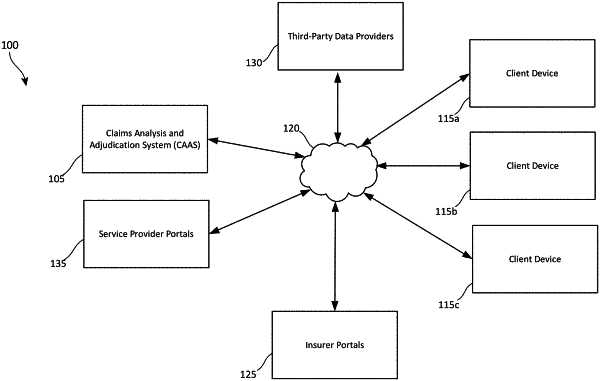| CPC G06Q 40/08 (2013.01) [G06N 20/00 (2019.01); G06Q 30/0203 (2013.01); G16H 10/60 (2018.01)] | 20 Claims |

|
1. A data processing system comprising:
a processor; and
a computer-readable storage medium storing executable instructions that, when executed, cause the processor to perform operations comprising:
obtaining an electronic copy of demographic information associated with a user, wherein the demographic information includes first demographic information provided by the user, demographic information obtained from one or more third-party data sources, or both;
providing the first demographic information as an input to a first machine learning model;
analyzing the first demographic information with the first machine learning model, wherein the first machine learning model is trained to segment people into clusters of people having similar demographics, wherein the first machine learning model is configured to analyze the first demographic information associated with the user to predict and output a cluster associated with the user and output predicted medical spending information associated with the predicted cluster;
providing the predicted medical spending information to a recommendation engine to generate a comprehensive insurance plan for the user comprising a plurality of insurance policies based on the predicted medical spending information;
customizing the comprehensive insurance plan based on the first demographic information associated with the user to generate a customized bundle of insurance policies;
generating an insurance recommendation report that presents the customized bundle of insurance policies to the user; and
causing a user interface of a display of a computing device associated with the user to present the insurance recommendation report.
|